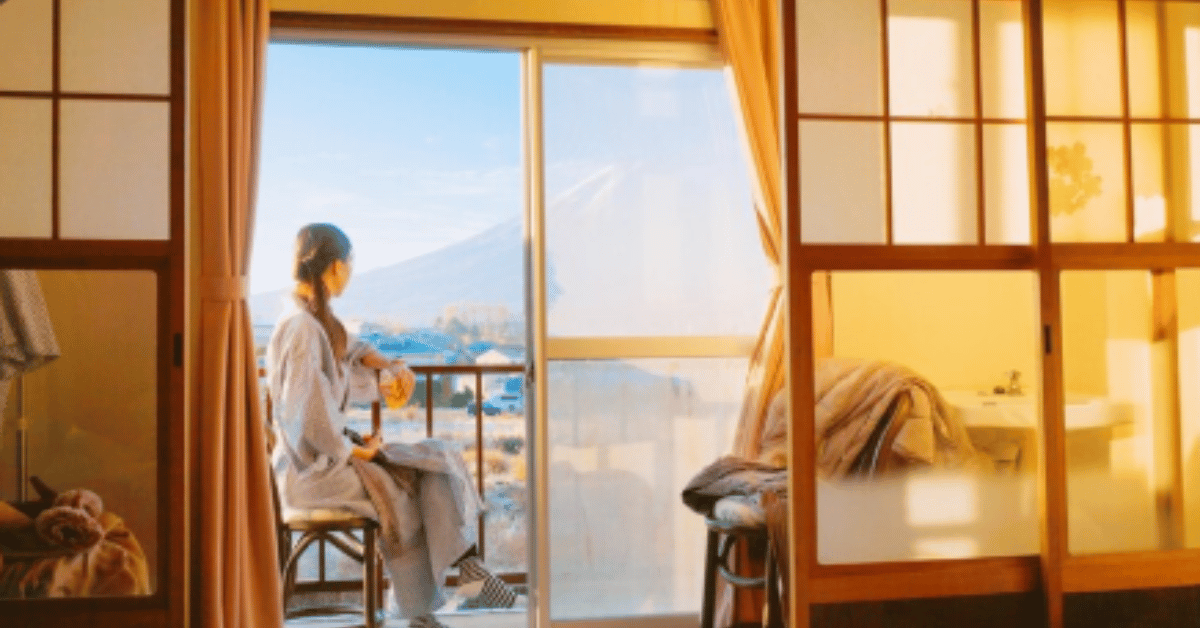Miyajima, an island in Japan’s Hiroshima Bay, is widely celebrated for its iconic floating torii gate, stunning Itsukushima Shrine, and serene blend of natural beauty with cultural heritage. For travelers seeking an unforgettable stay, the choice of a Miyajima hotel can shape the entire experience. From luxurious resorts offering panoramic sea views to intimate ryokan inns preserving centuries-old traditions, accommodation here is more than just a place to sleep—it’s an immersion into Japan’s timeless hospitality. Whether visitors arrive to witness the crimson gates against a sunset sky or to hike Mount Misen’s lush trails, finding the right hotel determines the rhythm of exploration. In this guide, we explore the island’s diverse lodging landscape, from opulent ocean-view suites with kaiseki dining to budget-friendly guesthouses designed for comfort and community. We also look at cultural etiquette, dining traditions, and tips for booking the perfect stay. For those planning their first visit or returning for a deeper experience, this article provides a well-rounded view, ensuring your choice blends comfort, culture, and convenience into a truly memorable journey.
Understanding Miyajima’s Hospitality Culture
The culture of hospitality in Miyajima blends traditional Japanese omotenashi—selfless customer care—with modern comfort. Many hotels here, especially ryokan-style inns, emphasize a personal connection between hosts and guests. Staff may greet visitors with a bow, offer tea upon arrival, and explain local customs that enrich the stay. This attention to detail is not only about service but about creating a seamless experience where guests feel respected and valued. Many lodgings encourage removing shoes indoors, and rooms often feature tatami mats and futon bedding. In luxury hotels, the experience may extend to private onsen baths with views of the Seto Inland Sea, while budget inns may focus on communal dining and cultural interaction. Understanding these customs ensures travelers appreciate the nuances of their stay and engage respectfully with the island’s traditions. This harmony of authenticity and comfort is one of the reasons Miyajima remains a top choice for cultural travelers worldwide.
The Range of Miyajima Hotels
Miyajima offers accommodations for nearly every type of traveler, from honeymooners seeking romance to solo explorers seeking budget comfort. Luxury hotels often command prime locations with panoramic views of Itsukushima Shrine or the sea, featuring spacious rooms, private balconies, and gourmet Japanese dining. Mid-range hotels balance modern convenience with traditional elements, providing Western-style bedding alongside tatami floors or offering both Japanese and international breakfast options. Budget stays, such as small inns or guesthouses, focus on affordability without sacrificing cleanliness or essential amenities. Many also provide shared spaces where travelers can meet others, making them popular with younger visitors. Seasonal demand can significantly influence prices, especially during cherry blossom season or autumn foliage, when views from hotel windows become part of the attraction. Selecting the right category involves balancing budget, desired amenities, and the kind of cultural immersion a traveler hopes to experience during their stay.
Luxury Stays on Miyajima
Luxury Miyajima hotels stand out for their ability to merge natural scenery with indulgent comfort. These establishments often feature spacious rooms framed by floor-to-ceiling windows, offering spectacular sunrise or sunset views over the water. Dining is a central part of the luxury experience, with chefs preparing multi-course kaiseki meals showcasing seasonal ingredients from the Seto Inland Sea. Onsite onsens, sometimes located on open-air terraces, allow guests to soak while gazing at the illuminated torii gate at night. Many luxury properties also offer private guided tours of the island, ensuring travelers can enjoy the sites without the usual crowds. For honeymooners, private dining and romantic sea cruises add layers of exclusivity. While these hotels come with a higher price tag, the curated service, exceptional location, and cultural depth they provide can make them well worth the investment for those seeking an immersive yet comfortable island retreat.
Table 1: Examples of Hotel Categories in Miyajima
| Category | Features | Ideal For | Price Range (Approx.) |
|---|---|---|---|
| Luxury Ryokan & Resorts | Ocean views, private onsens, kaiseki dining | Honeymooners, cultural luxury travelers | ¥45,000+ per night |
| Mid-Range Hotels | Mix of Japanese & Western rooms, moderate amenities | Families, couples, small groups | ¥18,000–¥40,000 per night |
| Budget Inns & Guesthouses | Shared facilities, basic comfort, cultural interaction | Solo travelers, backpackers | ¥5,000–¥15,000 per night |
| Capsule & Dorm-Style | Compact, affordable, often near ferry terminal | Young travelers, budget-conscious | ¥3,000–¥6,000 per night |
Mid-Range Hotels: Balancing Comfort and Cost
Mid-range Miyajima hotels often deliver an excellent compromise for travelers wanting more than the basics without venturing into luxury territory. Many of these hotels are located near the ferry terminal or within walking distance of the shrine, offering both convenience and scenic charm. Rooms may incorporate tatami mat sections with low tables alongside Western beds, allowing guests to experience traditional Japanese comfort without fully abandoning familiar amenities. These properties typically serve buffet breakfasts blending Japanese and Western items, making them appealing to a broad range of international visitors. Some mid-range hotels even provide small communal baths or rooftop terraces for evening relaxation. Pricing is moderate and tends to offer excellent value outside peak tourist seasons. For families or couples seeking a comfortable yet culturally rich base for exploring Miyajima, this category often provides the best balance of amenities, location, and cost.
Budget Stays and Guesthouses
Budget accommodations on Miyajima are far from compromising on cultural value. While rooms are simpler, cleanliness and hospitality remain priorities. Many guesthouses have dormitory-style setups with shared bathrooms, while others offer small private rooms for those wanting more privacy. The communal areas often become social hubs where travelers exchange stories, share food, and get tips from the owners on hidden gems around the island. Some budget inns also provide bicycle rentals, perfect for exploring the quieter corners of Miyajima. Although amenities like private baths or in-room dining are rare, these stays make up for it by offering genuine human connections and insights into local life. For adventurous and budget-conscious travelers, staying at a guesthouse often leads to richer cultural experiences than even some mid-tier hotels, especially if the host family actively engages with guests.
Cultural Experiences within Hotels
Staying in a Miyajima hotel is not only about accommodation but also about encountering cultural traditions woven into daily life. Many ryokan owners invite guests to wear yukata robes during their stay, creating a relaxed yet authentic Japanese ambiance. Tatami-floored rooms often include low dining tables where seasonal teas and local sweets are served. Some hotels organize calligraphy workshops or tea ceremonies, providing a hands-on introduction to Japanese artistry. Others arrange early morning walks to the Itsukushima Shrine before day-trippers arrive, offering a moment of rare tranquility. In luxury establishments, guests may even be welcomed by a cultural host who explains the island’s history and rituals over a private meal. For travelers seeking immersion rather than mere observation, such hotel-based cultural programs allow them to understand Miyajima in a way that guidebooks rarely capture. This deepens appreciation for the island and makes the hotel stay itself an integral part of the journey.
Seasonal Booking Strategies
Timing plays a critical role in both the price and experience of a Miyajima hotel stay. Spring’s cherry blossoms and autumn’s crimson leaves are peak seasons, drawing crowds from across Japan and abroad. During these periods, hotel rates often climb sharply, and reservations can be required months in advance. Summer offers warm weather ideal for hiking Mount Misen, though humidity and occasional typhoons are considerations. Winter, while quieter, unveils a more introspective side of the island, with crisp air and serene shrines dusted in frost. Many travelers find winter stays particularly rewarding for enjoying onsen baths without the bustle. Some hotels offer seasonal promotions, such as reduced rates in January or February or package deals that include ferry tickets. Strategic booking not only saves money but also determines the pace and character of a visit, whether the aim is lively festivals or peaceful contemplation of Miyajima’s natural and spiritual beauty.
Dining in Miyajima Hotels
One of the highlights of staying on Miyajima is the opportunity to savor its local cuisine without leaving the comfort of your hotel. Luxury ryokans often include elaborate multi-course kaiseki dinners that showcase fresh seafood from the Seto Inland Sea, seasonal vegetables, and artisanal pickles. Mid-range hotels may offer set menus with grilled oysters, an island specialty, or anago-meshi—grilled conger eel over rice—served with miso soup and seasonal sides. Budget guesthouses might not include full meals but often have shared kitchens, allowing travelers to prepare simple dishes from ingredients bought locally. Some properties also partner with nearby restaurants to offer meal vouchers. Breakfasts frequently combine Japanese and Western elements, such as miso soup and rice alongside scrambled eggs and pastries. For food lovers, choosing a hotel with strong culinary offerings turns mealtime into another cultural experience, allowing taste to complement the sights and sounds of Miyajima.
Onsen and Wellness Facilities
For many visitors, an onsen—Japan’s revered hot spring bath—is the pinnacle of hotel indulgence. On Miyajima, several hotels offer both communal and private onsen facilities, often positioned to maximize scenic views. Soaking in mineral-rich waters while gazing at the floating torii gate under moonlight creates an almost meditative experience. Luxury properties may offer in-room wooden tubs for private bathing, complete with aromatic hinoki wood that enhances relaxation. Mid-range hotels might provide rooftop baths, where evening breezes and sea vistas elevate the experience. Budget stays sometimes have smaller communal baths, but they still provide a welcome retreat after a day of sightseeing. Many onsens on the island follow traditional etiquette: bathing before entering the water, maintaining quiet conversation, and avoiding swimsuits in favor of complete immersion. This tradition transforms the bath into a ritual of cleansing both body and spirit, making it an essential part of a Miyajima hotel stay.
Table 2: Comparing Hotel Amenities on Miyajima
| Amenity | Luxury Hotels | Mid-Range Hotels | Budget Guesthouses |
|---|---|---|---|
| Onsen | Private & scenic, often in-room | Rooftop or shared baths | Small communal baths |
| Dining | Multi-course kaiseki meals | Set menus & breakfast buffets | Kitchen access, occasional meal service |
| Room Style | Spacious, sea-view suites | Mix of Japanese & Western | Compact rooms, shared facilities |
| Cultural Activities | Tea ceremonies, guided tours | Occasional workshops | Local tips from hosts |
| Location | Prime waterfront or shrine view | Near ferry or shrine | Mixed, often central |
Proximity and Accessibility
When selecting a Miyajima hotel, location plays a significant role in shaping the daily rhythm of a trip. Hotels near the ferry terminal offer unmatched convenience for arrivals and departures, allowing travelers to begin exploring immediately. Those situated close to Itsukushima Shrine and the floating torii gate enable spontaneous visits, especially at dawn or dusk when the light is most enchanting. More secluded hotels up the hillside provide quiet escapes, often accompanied by panoramic views and fewer crowds. Accessibility is generally straightforward, as Miyajima is compact, but for travelers with mobility concerns, checking the hotel’s proximity to key attractions and transportation hubs is essential. Walking is the primary mode of movement on the island, so a well-placed hotel can save both time and energy, enhancing the overall ease of the visit.
Eco-Friendly and Sustainable Options
Sustainability is becoming an increasingly important factor in hotel selection, and Miyajima has begun embracing eco-conscious hospitality practices. Some hotels incorporate energy-saving systems, such as solar panels and motion-sensor lighting, while others prioritize locally sourced food to reduce environmental impact. Waste reduction measures, including the use of refillable toiletry dispensers and elimination of single-use plastics, are growing more common. Certain properties support local artisans by featuring handcrafted décor and offering guests opportunities to purchase locally made goods. Choosing a sustainable hotel not only benefits the environment but also supports Miyajima’s long-term preservation as a cultural and natural treasure. Travelers who value responsible tourism will find that these eco-friendly lodgings allow them to align their accommodations with their ethical and environmental values without sacrificing comfort.
Activities Arranged by Hotels
Beyond providing a place to sleep, many Miyajima hotels curate activities that deepen the visitor’s engagement with the island. These range from guided shrine visits and hiking tours to oyster farm excursions and evening illumination walks. Some luxury hotels collaborate with local artisans to offer pottery-making or calligraphy lessons, while mid-range properties might arrange cycling tours or nature walks. Even budget guesthouses often maintain close relationships with local businesses, enabling them to recommend experiences that match the traveler’s interests. Participating in hotel-arranged activities often leads to encounters that are more personal and less commercial than standard tourist offerings, adding depth and authenticity to the trip. Such programs transform the hotel into a gateway for cultural discovery rather than simply a base of operations.
Unique Hotel Design and Architecture
Architecture plays a defining role in the identity of Miyajima hotels. Traditional ryokans are often constructed with wooden beams, paper shoji screens, and tatami flooring, preserving a sense of timeless elegance. Many also feature inner courtyards with carefully arranged rock gardens or koi ponds, offering moments of stillness. Contemporary hotels may incorporate glass walls to maximize sea views while using natural materials to blend with the surrounding environment. Some properties integrate art installations by local creators, turning public spaces into miniature galleries. This architectural diversity allows travelers to choose accommodations that match their personal aesthetic, whether they prefer historic charm or minimalist modernism. In either case, design becomes part of the sensory memory of the trip, leaving a lasting impression long after departure.
The Role of Staff in Shaping the Experience
While location and amenities matter, it is often the human touch that defines a hotel stay. In Miyajima, hotel staff frequently go beyond standard service to create memorable experiences. From helping carry luggage to offering personalized sightseeing maps, these gestures are grounded in Japan’s deeply ingrained omotenashi philosophy. In luxury hotels, staff might remember guests’ preferences and adjust services accordingly, such as preparing a favorite tea upon arrival. Even in budget guesthouses, hosts often take time to share personal recommendations or join guests for casual conversations. Such interactions not only make guests feel valued but also provide insights into daily life on the island, bridging the gap between traveler and local. This human connection can transform a pleasant stay into an unforgettable one.
Quotes from Travelers
“Watching the floating torii gate from my room’s balcony as the tide came in felt like stepping into a living painting.” – Hiroko S., Tokyo
“The ryokan’s dinner was a revelation. Every dish told a story about Miyajima’s seasons and traditions.” – Daniel M., London
“Our guesthouse host took us on a sunrise walk to the shrine. It was the quietest, most magical moment of our trip.” – Aisha K., Toronto
Practical Booking Tips
When booking a Miyajima hotel, flexibility and foresight are key. For peak seasons, aim to reserve at least three to six months in advance, especially for luxury ryokans with limited rooms. Travelers visiting during off-peak months may find better deals and greater availability, but should still book early if specific amenities or views are a priority. Checking cancellation policies is wise, as weather conditions can sometimes impact travel plans. Using direct booking channels often ensures better rates or added perks, such as complimentary breakfast or room upgrades. Finally, consider package deals that include ferry tickets, guided tours, or dining options, as these can simplify planning while offering value. An informed booking strategy can transform the logistics of a trip from stressful to seamless.
Miyajima Hotels for Families
Families traveling to Miyajima often seek hotels that balance comfort with kid-friendly amenities. Mid-range properties frequently provide larger rooms or connecting suites, making it easier to accommodate multiple generations. Some hotels offer children’s meal options, play areas, or family-oriented guided tours. Proximity to attractions like the aquarium or easy hiking trails also enhances family convenience. Budget guesthouses may offer communal kitchens for preparing child-friendly meals, while luxury hotels sometimes provide babysitting services to allow parents a moment of relaxation. Choosing family-oriented accommodation helps ensure that all members of the group can enjoy the trip equally, turning the stay into a shared experience rather than a logistical challenge.
Solo Traveler-Friendly Hotels
For solo travelers, Miyajima offers a welcoming and safe environment. Guesthouses with shared dormitories foster connections among like-minded explorers, while smaller ryokans can provide the solitude some solo visitors crave. Many hotels offer single-occupancy rates, avoiding the penalty sometimes imposed on lone travelers. Participating in hotel-organized activities can help solo guests engage with others, while staff often take extra care to ensure solo travelers feel comfortable and supported. The compact size of the island makes it easy to explore without feeling isolated, and a well-chosen hotel can become both a sanctuary and a social hub.
Miyajima Hotels with Scenic Highlights
Some hotels are destinations in themselves due to their remarkable views. Waterfront properties may feature balconies or lounges where guests can watch fishing boats glide across the Seto Inland Sea. Others face Mount Misen, providing ever-changing vistas as mist, sunlight, and shadow move across the slopes. The most sought-after views, however, are those of the floating torii gate, especially when illuminated at night. Hotels with such vantage points often charge a premium, but for many travelers, the sight is worth the investment. These visual connections to Miyajima’s landmarks ensure that even moments spent indoors feel intimately tied to the island’s beauty.
Conclusion
Choosing a Miyajima hotel is about much more than selecting a place to sleep—it is about shaping the entire character of the journey. Luxury properties deliver indulgence through panoramic views, gourmet dining, and cultural programs that immerse guests in centuries-old traditions. Mid-range hotels balance cost and comfort, offering modern amenities alongside authentic touches. Budget guesthouses bring travelers closer to the island’s everyday rhythms, fostering connections that often outlast the trip itself. Whether your priorities are cultural immersion, family-friendly amenities, solo travel convenience, or eco-conscious hospitality, Miyajima offers accommodations to match every vision of an island escape. By understanding the range of options, considering seasonal timing, and aligning amenities with personal interests, travelers can ensure that their stay is both comfortable and deeply memorable. Ultimately, the right hotel not only supports the exploration of Miyajima but becomes part of the story itself—woven into the memories of floating gates, quiet shrines, and the warm welcome of an island where tradition and hospitality remain inseparable.
FAQs
1. What is the best time of year to stay at a Miyajima hotel?
The best times are spring (late March to early April) for cherry blossoms and autumn (late October to mid-November) for vibrant foliage. These seasons offer the most stunning scenery, but they also attract the largest crowds, so booking early is essential. Winter offers lower rates and fewer tourists, with crisp air perfect for quiet shrine visits. Summer provides warm weather for hiking, though humidity can be high.
2. Are Miyajima hotels suitable for families with children?
Yes. Many mid-range and some luxury hotels offer larger family rooms, children’s meal options, and proximity to attractions like the aquarium and nature trails. Budget guesthouses may have communal kitchens for preparing child-friendly meals. Some luxury hotels even offer babysitting services, allowing parents some relaxation time.
3. Can budget travelers still enjoy a culturally rich Miyajima hotel experience?
Absolutely. Budget guesthouses and inns may lack private baths or gourmet meals, but they often deliver rich cultural value through friendly hosts, shared dining areas, and local travel tips. These accommodations can provide genuine connections with the island’s people and culture.
4. Do Miyajima hotels typically have onsens?
Many hotels, particularly luxury ryokans, offer private or communal onsen baths, often with scenic sea or mountain views. Mid-range hotels may have rooftop or shared baths, while budget accommodations may offer smaller communal bathing facilities. Onsen etiquette—such as bathing before entering the hot spring—is important to follow.
5. How far in advance should I book a Miyajima hotel?
For peak seasons like cherry blossom and autumn foliage, book 3–6 months in advance to secure your preferred location and room type. Off-season bookings are more flexible, but early reservations still help secure the best deals and amenities.











